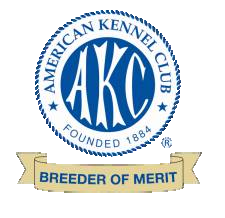A review of how probiotics work and why they are so important to good health.
Probiotics have received a great deal of attention lately, and this focus is absolutely justified. An increasing number of products, from yogurts to pet foods, contain probiotics. Often referred to as “healthy” and/or “friendly” bacteria (or microorganisms) in the media, their proper notation is “direct fed microbials” when used in pet foods. Basically, probiotics are helpful bacteria that reside in the intestinal tract. In fact, every digestive system contains millions of bacteria, both those with a healthful purpose (like probiotics) and some that are not so beneficial. While some kinds of bacteria can be harmful, many (like direct fed microbials) actually help the immune system adapt to internal changes within the body and thus naturally support good health.
Most people do not realize that located within the digestive system is one a very important group of immune cells called the Gut Associated Lymphoid Tissue (GALT), which communicate with the immune cells located throughout the body. In some respects, the GALT is the first line of defense against unhealthy microorganisms in the body. Whereas most of the cells in our body receive nutrition from the blood, this is not true for the GALT – it receives the majority of its nutrients from these helpful bacteria.
Whenever you or your companion animal takes a round of antibiotics, it indiscriminately kills all of the bacteria, regardless of their ultimate effect on the body (by providing healthy functions versus unhealthy outcomes). That’s why it’s often recommended that you eat yogurt while taking antibiotics – to re-establish the healthy bacteria in the GI tract to avoid intestinal distress – both during the course of treatment and in the days immediately following completion of an antibiotic therapy.
Good bacteria are necessary to maintain the healthy ecology of intestinal microbes known as the “gut flora”. The types of bacteria contained in the gut differ from species to species, and animal to animal, but there are commonalities in dogs and cats. These helpful bacteria can have numerous positive effects on their host’s body, including:
- Causing chemical reactions that convert foods into vitamins and energy
- Competing with unhealthy microorganisms, helping block their grip on the lining of the gut wall
- Increasing the tolerance of bad bacteria by stimulating the immune system
- Protecting the gut mucosal barrier, thereby promoting the health of the gut lining
The community of bacteria in the intestinal system protects its host from invading unhealthy microorganisms in a combined effort called “colonization resistance”. This group resistance has proven effective at supporting intestinal health.
Adding direct fed microbials to pet food can help a dog or cat’s natural digestive system to work at peak efficiency, allowing the pet to get even more nutrition from food because they ensure a healthy intestinal flora, which supports:
- The production of food for healthy enterocytes (specialized cells lining the GI tract)
- Increased nutrient absorption
- GALT, which communicates with systemic immune systems
Whether you refer to these health-promoting bacteria as “probiotics” or “direct fed microbials”, their effect on the digestive system of your companion animal simply can’t be overstated. In fact, after a careful review of all the information, it would appear that direct fed microbials are vital to your pet’s health.
November Edition of the Life’s Abundance Newsletter.

